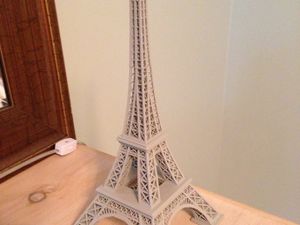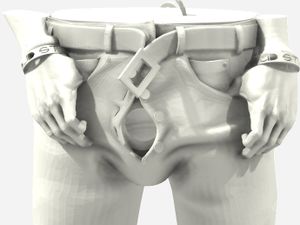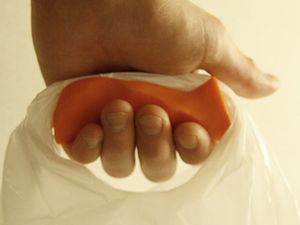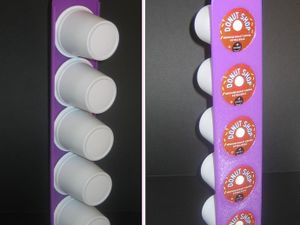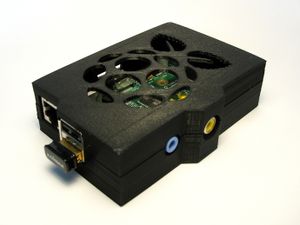User:Scottmilander
Contents
Introduction
My name is Scott Milander and I am a super senior at The Pennsylvania State University. I am majoring in Civil Engineering with a specialization in Geotechnical Materials. I work full-time for Penn State at the Larson Transportation Institute in the Pavements Lab as a Lab Technician, while taking classes part-time to finish my degree.
During this Fall 2013 semester, I am working on the Rainbow 2 Printer, which you can follow the status of the printer here. My group consists of Quinn Carpenter [1] and Abbie Letts[2] and myself.
BLOGS
Weekly blogs will be written based on prompts provided by the professor. These blogs are typically related to RepRap in one way or another but not always directly.
Blog Number Four
9/25/13
After watching the video of Arduino and RepRap, their business model is give it away for free, just like open source. Arduino was designed to be very easy to use by anyone that wants to, such as an engineer or a hobbyists at home in their basement. The open source business model has both pros and cons. The pros are it is cheap or even free, everyone has access to it, and anyone can change it. The cons are anyone can see the code and change the code and now can become a "hacker". This can aslo be a pro, as anyone can see the code and detect bugs and then make it better.
The traditional business model of selling your prodcut to make money is pretty opposite of open source. It too has pros and cons. Some of the pros are there is usually only one version of the software out at a time, such as Apple only releasing an iOS every year, but the open source Android has multiple versions out in a year and not every phone works on every version. Another pro of the traditional model is the vast amount of profit the company makes each year from selling their product. But if you look at someone like Android, they make alot of money also, but it is from not selling their prodcut, but from such things as advertising and new apps. The cons are you are relying on the company to tell you that their prodcut is 100% perfect and has no bugs or glitches.
Both open source and the traditional business models have some very good pros and cons each. I guess it really depends on if the open source company has an alternative income source to self sustain its open source product. If not, than the traditional business model is the way to go.
Blog Responses
After looking through the week three blogs of my fellow classmates, I did notice that Matt [3] commented on my week three blog about the printing of human kidney's. Also, he stated he liked my introduction and the link the the status of the Rainbow printer that we are working on. While reading Matt's blog, he has a lot of good information on his blog.
I also noticed that Justin [4] commented about my blog of the printing of human organs and how it could save millions of lives each year if perfected.
Blog Number Three
9/18/13
Part One: Already completed during the first week of class.
Part Two: While reading through my classmates blogs, I found several that were very interesting and have excellent layouts. But a couple of them stuck out to me as being very good blog pages. I liked Abbie's blog page, she has it broken down to several different pages, one for blogs, one for introduction of her and another for general course info. It has a good layout with different pages and not too cluttered, like some other blogs I have read. Abbie's blog page can be found here.
Part Three: While reading my classmates blogs, I noticed while reading Justin's blog, that his link to the Statue of Liberty is incorrect. His page can be found here.
I was able to find Peter Dorsey's blog through the search function. I liked his second blog about recycling the used filament. Although he didn't really say how he was going to recycle the filament, just that he was going to start on the project. I would like to know if he or his group is going to use an existing machine or purchase a "Filastruder" or "Filabot". Peter's blog page can be found here.
I tried to search for Adeola's blog page, but could not find it. I tried searching using his full name, email and part's of his name, but had no luck finding a wiki page for him.
Blog Number Two
9/11/13
While searching the web for interesting topics about 3D printing, I came across a article about printing human organs, particularly human kidneys. The website can be found at here. The company is taking living human kidney cells and combining them with a hydrogel solution which is then used for printing the kidney. They say the printed kidney can live for up to four months.
This would save millions of lives each year, for the people who are on transplant lists and die before ever recieving their new organ(s). The technology is still new and the organs are only a fraction of the size of the real organs, but they say that the printed organs function the same as the real ones do. It looks like the science from the movies like Star Trek and Blade Runner might become reality in the near future. I look forward to the future so see what else we can print using 3D printers, which can enhance or save lives.
Blog Number One
9/4/13
A) Something amazing/beautiful:
Here is something that looks beautiful, the Eiffel Tower. The STL can be found at here.
B) Somethinig funny or strange:
Here is something very strange, a birdhouse where the birds enter through the zipper of someone's pants. The STL can be found at here.
C) Something useless:
Here is something I find useless, a handle for shopping bags, where would one store this while shopping. The STL can be found at here.
D) Something useful:
This is something I find useful, a holder for my K-cup coffee. The STL file can be found at here.
E) The 'best' printable Raspberry Pi case:
Here is a neat looking Raspberry Pi Case that I found. The STL file can be found at here.
None of these things surprise me, but the Birdhouse with the zipper is very strange, not sure how someone thought of that as the enterance to the birdhouse. I think I saw more strange things than any other category, but all of these things are creative and took some imagination to come up with the designs.
